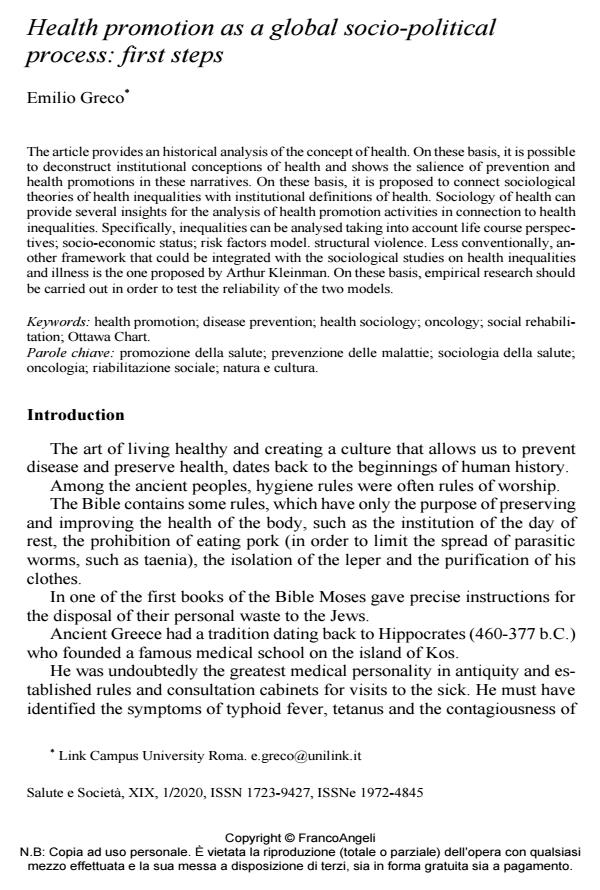Health promotion as a global socio-political process: first steps
Journal title SALUTE E SOCIETÀ
Author/s Emilio Greco
Publishing Year 2020 Issue 2020/1
Language English Pages 12 P. 23-34 File size 137 KB
DOI 10.3280/SES2020-001003
DOI is like a bar code for intellectual property: to have more infomation
click here
Below, you can see the article first page
If you want to buy this article in PDF format, you can do it, following the instructions to buy download credits

FrancoAngeli is member of Publishers International Linking Association, Inc (PILA), a not-for-profit association which run the CrossRef service enabling links to and from online scholarly content.
The article provides an historical analysis of the concept of health. On these basis, it is possi-ble to deconstruct institutional conceptions of health and shows the salience of prevention and health promotions in these narratives. On these basis, it is proposed to connect sociological theories of health inequalities with institutional definitions of health. Sociology of health can provide several insights for the analysis of health promotion activities in connection to health inequalities. Specifically, inequalities can be analysed taking into account life course perspec-tives; socio-economic status; risk factors model. structural violence. Less conventionally, an-other framework that could be integrated with the sociological studies on health inequalities and illness is the one proposed by Arthur Kleinman. On these basis, empirical research should be carried out in order to test the reliability of the two models. .
Keywords: Health promotion; disease prevention; health sociology; oncology; social rehabilita-tion; Ottawa Chart.
Emilio Greco, Health promotion as a global socio-political process: first steps in "SALUTE E SOCIETÀ" 1/2020, pp 23-34, DOI: 10.3280/SES2020-001003